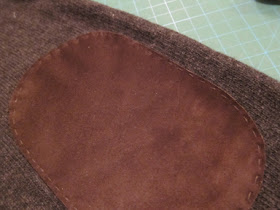I bought this book three month before its release without knowing who the author was or what the contents were. I saw the magic word 'Couture' and put it in my shopping cart.
Here is it:
The Dressmaker's Handbook of Couture Sewing Techniques: Essential Step-by-Step Techniques for Professional Results
The author is Lynda Maynard (I have never heard of her, but this doesn't mean anything). She has a BA in textiles and clothing from San Jose State University and is an adjunct professor in the fashion design departments of two community colleges and a private design school in the San Francisco Bay area. Apparently she is also an author of the CD book Demystifying Fit.
Nevertheless, my experience with instruction books like this is that it's not about all the titles and affiliations with prestigious organizations but about the commitment of the author to his subject.
So, here you have a very well illustrated and designed handbook for ESSENTIAL couture techniques, not more not less.
I liked how it is organized:
It starts with a Couture Technique Selector, which is a thumb preview of exactly thirty-nine couture techniques. These are divided into Binding and Finishes, Design Details: On Show, and Design Details: Concealed.
Each technique is accompanied with a number of illustrations and steps. The author also includes so-called Couture Secrets and tips on materials, pressing, construction and style. With my rather patchy knowledge of couture techniques I do see that a lot of information that I have seen scattered across different books dedicated to Couture has been very nicely compiled and presented under individual techniques.
For example, in a section on Banding V-Neck on Woven Fabric, Ms Maynard says
"Silk organza is an indispensable item in the couturier's supply arsenal. Use it to underline and interface garment sections, stabilize curves and angles, tape straight edges, and steady wiggly fabrics for specific procedures."
In Style Suggestion she adds:
" This technique works well on bateau necklines also, since each shoulder seam join functions as a V. try using a contrasting fabric or color, or experiment with bias stripes for added dash."
The part Design Details: On Show includes
Channel-stitched accents
Corded accents
Petersham "peek" seam
Petersham "peek" on a wrap skirt
Hong Kong finish on the outside
Wide charmeuse hem band
Ribbon-trimmed hem
Decorative trim hem
Flange closure for chiffon
Charmeuse welt edging
Charmeuse welt-edging: add a picot finish
Ribbon-trimmed collar band
Boned cuff
Shoulder Pad (I don't know why this technique is in 'On Show' section)
Button-on garment sections
I especially loved Design Details: Concealed
It includes techniques on
Lining/Binding skirt panels
Couture waistband (I had to re-read this one in Claire Schaeffer's book couple of times to understand)
High-waist couture facing (using boning! how clever)
Easy double-needle hem (for stretch fabrics)
Organza "bubble" hem finish (to prevent hem on skirts and dresses from collapsing)
Faced hem (great for dresses with longer drapey skirts)
Horsehair braid hem (I wish I could see a garment with such a hem - the effect of this technique is difficult to imagine)
Concealing horsehair braid in the hem
Balanced dart (this technique is widely covered in most books on couture techniques)
Satin pocket bags
Waistline "flip-out" pouch
The book includes a section on "all the essential equipment for the couture sewer", which included a sewing machine and a serger ( I thought a serger is a no-no in couture sewing?). It goes on to tools like scissors, pins, patternmaking tools and other. Finally it lists pressing equipment.
I thought this part in the book was not so great since nowhere in the book does the author explain how or where to use many of these tools.
A section on underlinings/ backings is interesting. I thought, finally, more than a page on underlinings, but, unfortunately the technique of applying underlining is just half a page. But to compensate this, the author gives eight pages with images comparing several combinations of backed and unbacked fabrics, explaining the effect the backing/ underlining has on the fashion fabric.
Directory of Luxury Fabrics and Trims includes
Linings - discussing application, practical points for silk crepe de chine and acetate satin. Honestly, what about China Silk, Silk Charmeuse? I hear all the time how Chanel skirt are lined with charmeuse. These were not covered here
Underlinings describe Rayon Challis, Batiste, Voile, Silk Organza, Cotton Flannel, Muslin, Hair Canvas.
Charmeuse finally appears under Luxury Fabrics, together with Hammered Satin, Silk Dupioni, Silk Chiffon, Handkerchief Linen, Lightweight Knits, Silk Velvet, Lightweight Wool, Cotton Batiste, Voile, organdy, Silk Gazar and Linen.
Trims cover applications for Rayon Ribbon, Mousetail, String, Petersham, Yarn, Satin Ribbon, Grosgrain Ribbon, Rattail, Decorative Trim and Decorative Ribbon
Maynard's book dedicates its final pages to Essential Couture Techniques (yet again? what about Couture Techniques part that takes up most of the book). She explains how to do French Seam, Spaced Tucks, Hand-Finished Zipper, Underlining, Hanging Loops, Adding Grosgrain Ribbon, Piped Cuff, Shoestring Straps, Buttons, Buttonholes on Sheer Fabric, Snaps, Hand-Bound Buttonhole and two pages on Making a Muslin. The muslin part is somewhat brief and is handled in a by-the-way manner. It could have been explained in more detail at the beginning of the book. Why all these techniques ended up on final few pages is a mystery to me. Nevertheless they are worth learning.
I know, I have criticized several sections in the book, but I have to say that the main part - those 39 and 12 more techniques hidden toward the end of the book - is really interesting. However, this book is not a substitute for
Couture Sewing Techniques
by Claire Schaeffer (which covers couture construction process from start to finish) but a great collection of selected techniques. It's a great addition to my library and I will start applying these techniques starting with the next projects.
What books on Couture Sewing do you recommend?































